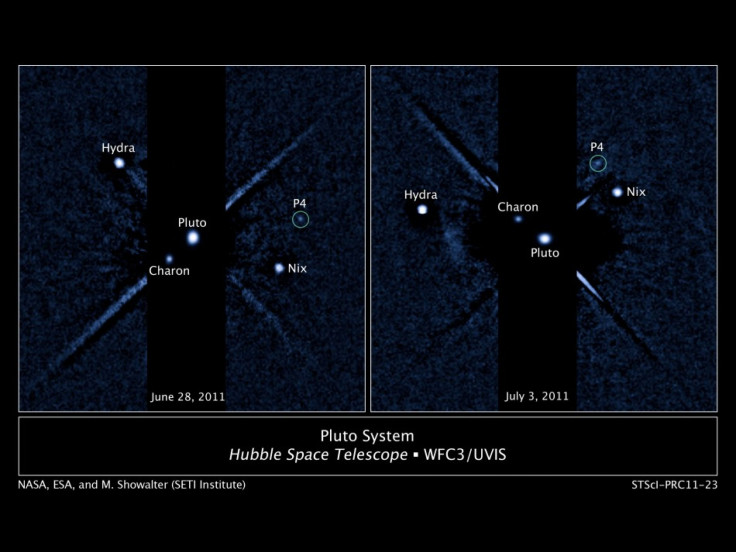New Moon for Pluto: Just Call it P4 for Now

Pluto's got a new moon, scientists discovered last week while on the hunt for dust rings around the icy dwarf planet. Using images from the Hubble Space telescope, P4 - a temporary name for the new moon, given by NASA - is estimated to be between 8 and 21 miles in diameter.
P4 joins Pluto's largest moon, Charon, discovered in 1978 by the U.S. Naval Observatory, and Nix and Hydra, a pair that was spotted in 2005 with Hubble technology.
The first image of P4, taken on June 28 by a wide field camera, was followed by additional images taken between July 3 and July 18.
The discovery is inspiring for NASA's New Horizons, a mission that plans to fly through Pluto's system in 2015.
"I find it remarkable that Hubble's cameras enabled us to see such a tiny object so clearly from a distance of more than 3 billion miles," said Mark Showalter, the main man responsible for discovering P4 and a member of the SETI Institute in California.
In 2006, the International Astronomical Union (IAU) downgraded Pluto's status in the solar system from classified planet to dwarf planet, despite much uproar from scientists around the world.
The same union will be responsible for the rigorous process of renaming P4.
In the meantime, polls like the one conducted by Space.com have "Mickey" as the most popular choice, if regular, non-IAU folks had their way.
Of course, "Mickey" would not go well with official naming rules, as the IAU gives names orbiting objects around Neptune "mythological names associated with the underworld," according to reports.
Showalter himself has hinted that "Cerberus" has been popular among discussions for the new moon's name.
© Copyright IBTimes 2024. All rights reserved.





















